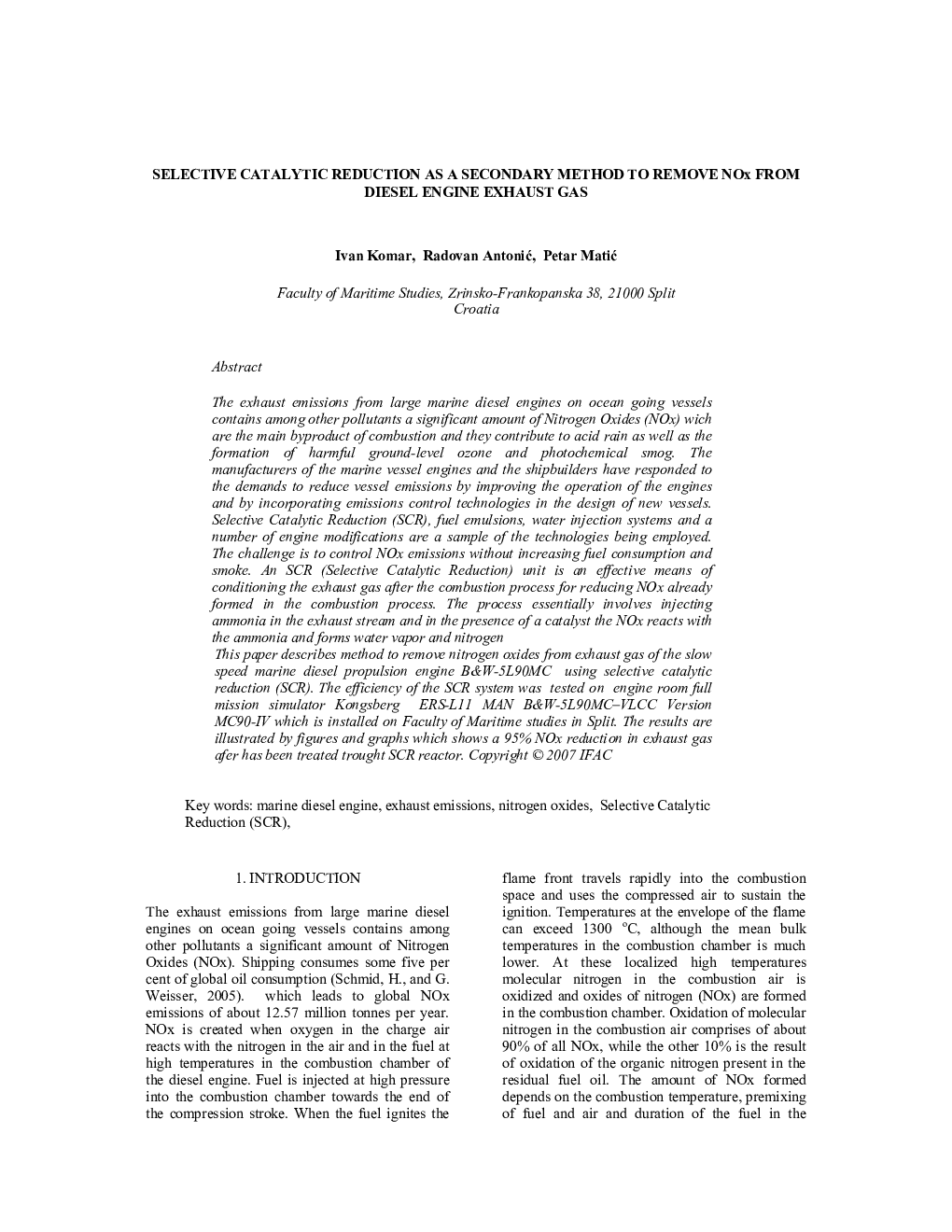| Article ID | Journal | Published Year | Pages | File Type |
|---|---|---|---|---|
| 723061 | IFAC Proceedings Volumes | 2007 | 5 Pages |
The exhaust emissions from large marine diesel engines on ocean going vessels contains among other pollutants a significant amount of Nitrogen Oxides (NOx) wich are the main byproduct of combustion and they contribute to acid rain as well as the formation of harmful ground-level ozone and photochemical smog. The manufacturers of the marine vessel engines and the shipbuilders have responded to the demands to reduce vessel emissions by improving the operation of the engines and by incorporating emissions control technologies in the design of new vessels. Selective Catalytic Reduction (SCR), fuel emulsions, water injection systems and a number of engine modifications are a sample of the technologies being employed. The challenge is to control NOx emissions without increasing fuel consumption and smoke. An SCR (Selective Catalytic Reduction) unit is an effective means of conditioning the exhaust gas after the combustion process for reducing NOx already formed in the combustion process. The process essentially involves injecting ammonia in the exhaust stream and in the presence of a catalyst the NOx reacts with the ammonia and forms water vapor and nitrogenThis paper describes method to remove nitrogen oxides from exhaust gas of the slow speed marine diesel propulsion engine B&W-5L90MC using selective catalytic reduction (SCR). The efficiency of the SCR system was tested on engine room full mission simulator Kongsberg ERS-L11 MAN B&W-5L90MC—VLCC Version MC90-IV which is installed on Faculty of Maritime studies in Split. The results are illustrated by figures and graphs which shows a 95% NOx reduction in exhaust gas afer has been treated trought SCR reactor.
